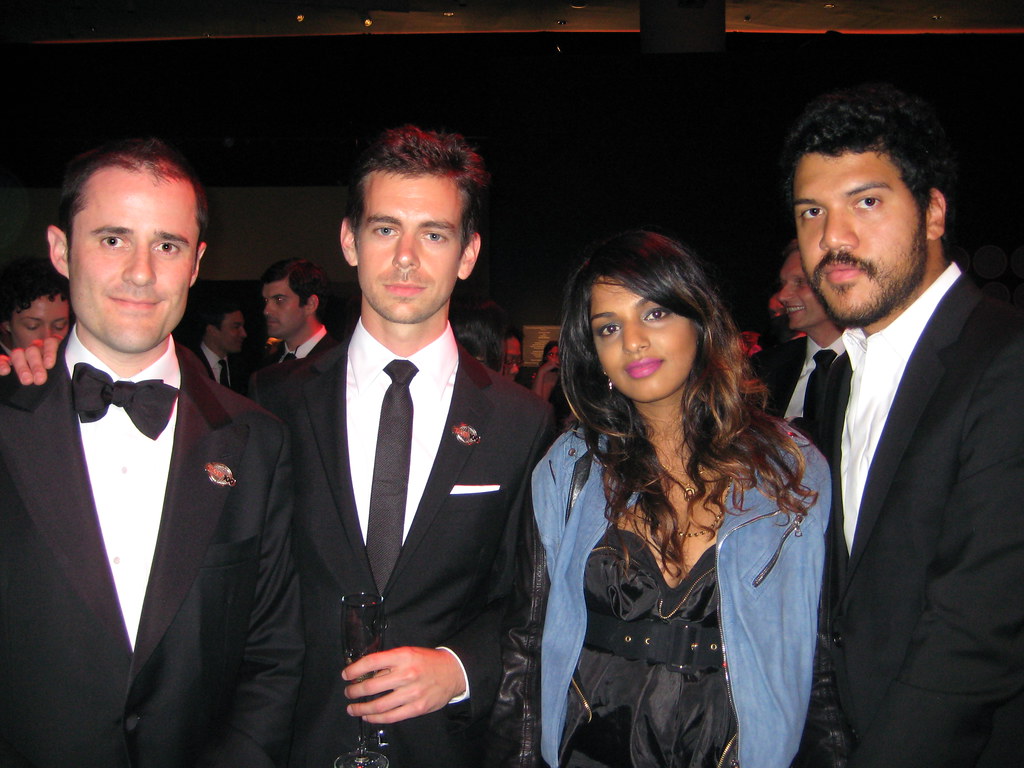
Music videos, for decades, have been so much more than just visual backdrops to our favorite songs. They’re powerful canvases where artists paint their deepest visions, make bold statements that echo through culture, and sometimes, stir up a whole lot of exhilarating trouble. These mini-films often serve as crucial extensions of an artist’s personal vision, deliberately pushing established boundaries, challenging societal norms, and sparking vital conversations about art, expression, and everything in between that makes us think and feel. But what happens when an artist’s daring vision collides head-on with what broadcasters, driven by public opinion or corporate guidelines, deem “acceptable”?
Well, the answer, quite frequently, is that these groundbreaking and often boundary-pushing visuals get slapped with a ban. Major networks, grappling with public outcry, navigating the labyrinth of government regulations, or adhering to their own carefully crafted internal guidelines, have consistently stepped in to restrict or outright pull controversial videos from the airwaves. This isn’t just about fleeting moments of shock; it delves deep into the ongoing tension between the fundamental freedom of artistic expression and the perceived need for social impact and responsibility, highlighting how these battles profoundly shape the very landscape of pop culture. It’s a delicate dance where creativity meets constraint.
So, buckle up, because we’re about to embark on an exciting and insightful deep dive into some of the most talked-about and fiercely debated music videos in history. These are the visuals that were so controversial, so provocative, or just so “out there” that they crossed an unseen line, prompting them to be banned by major networks. Yet, in a fascinating twist, their very notoriety often amplified their cultural impact, proving once and for all that sometimes, being perceived as “too much” is precisely what makes a piece of art unforgettable and incredibly influential. Get ready to explore the visuals that dared to defy.
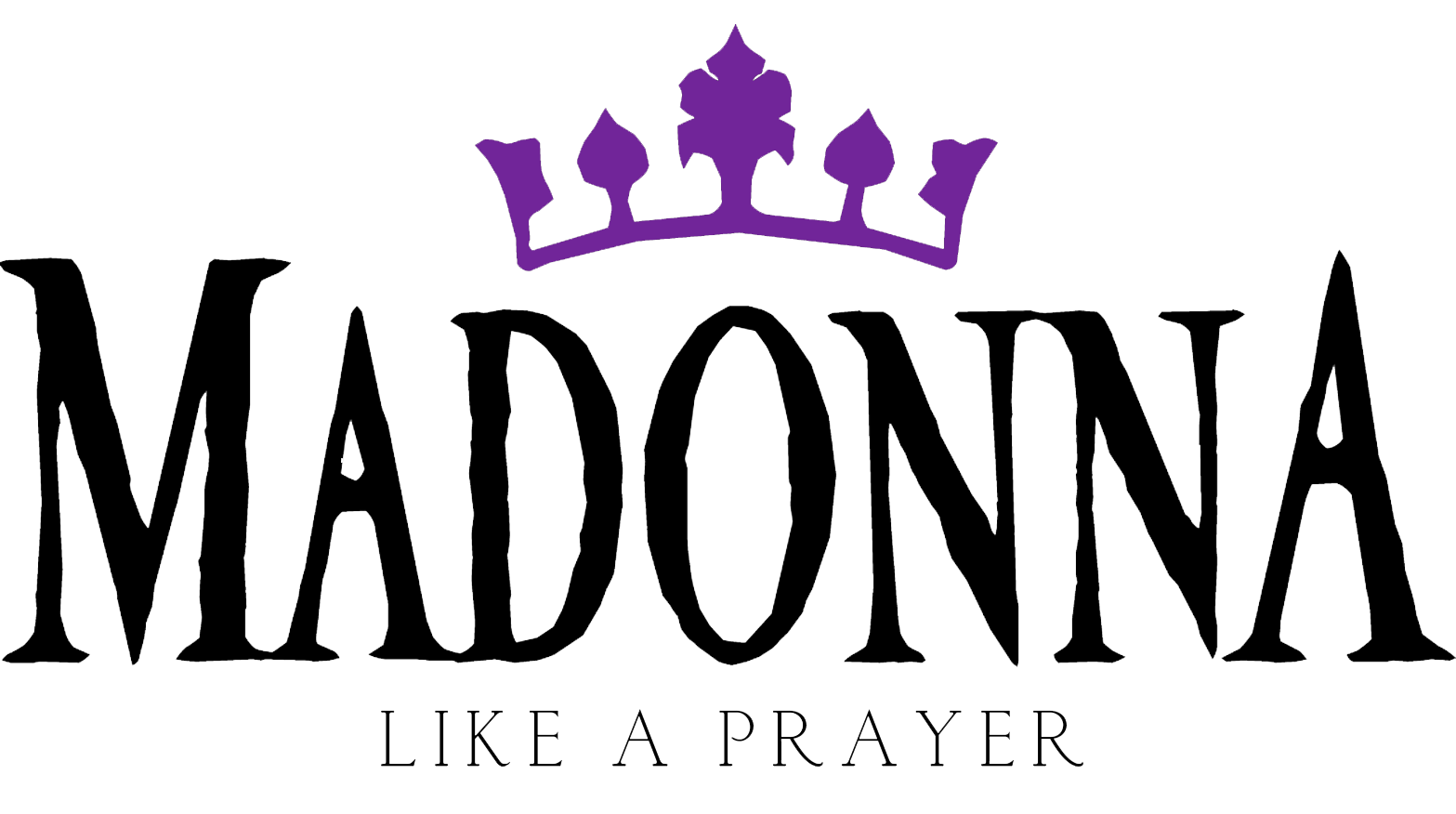
1. **Madonna – “Like a Prayer” (1989)**Madonna, the undeniable Queen of Pop, has always possessed an uncanny ability to captivate audiences and, perhaps more importantly, to get people talking. Her 1989 music video for “Like a Prayer” stands as a quintessential example of her masterful approach to provocation, cementing her legacy as an artist who fearlessly pushed cultural buttons. This particular visual ignited an absolute firestorm of controversy upon its release, primarily due to its daring and unprecedented use of complex religious symbolism, intertwining the sacred with the overtly sensual. Viewers were confronted with powerful scenes of burning crosses and a deeply resonant, implied romantic relationship with a Black Jesus figure, imagery that immediately and intensely didn’t sit well with numerous religious groups and conservative segments of society.
The backlash was not only swift but also incredibly severe, reaching the highest echelons of religious authority. The Vatican itself took a remarkably strong stance against the video, unequivocally labeling it as blasphemous. This condemnation represented a significant blow, especially considering Madonna’s immense global influence at the time. The controversy wasn’t just limited to religious organizations; it quickly spilled into the corporate world. Pepsi, a colossal global beverage giant and a major sponsor, found itself in an untenable position and quickly withdrew its lavish advertisement campaign featuring the pop star. This highly publicized move showcased the immense commercial and societal pressure Madonna was under, as the uproar extended further, manifesting in calls for boycotts.
Despite the intense criticism and attempts at censorship, the controversy surrounding “Like a Prayer” achieved a fascinating effect: it only amplified the song’s already burgeoning popularity, cementing Madonna’s enduring reputation as an artist who fearlessly pushed boundaries and sparked crucial discussions on profound themes such as religion, race, and the very limits of artistic freedom. A public poll conducted in 1989 starkly revealed that a staggering 70% of viewers found the video offensive, vividly illustrating the deep and uncomfortable divide it caused among audiences. This video remains a powerful benchmark for artistic provocation.
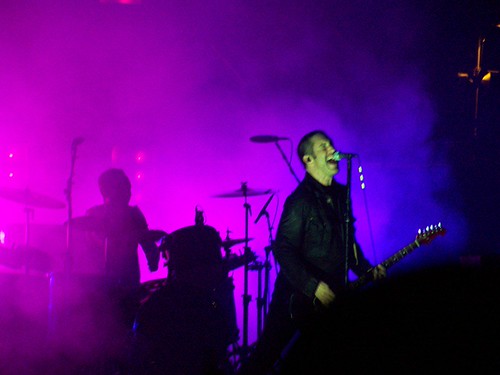
2. **Nine Inch Nails – “Closer” (1994)**Prepare yourself for a journey into the intense, uncompromising, and graphically charged world of Nine Inch Nails’ “Closer” video, unleashed upon the public in 1994. This visual masterpiece is not merely a backdrop to the song; it’s infamous for its disturbing and visceral content, diving headfirst into dark themes that many found profoundly unsettling and deeply provocative. It’s far from your average, palatable pop video; instead, “Closer” features jarring, almost surreal scenes of bondage, a haunting image of a crucified monkey, and an array of unsettling religious themes that left audiences simultaneously shocked, repulsed, and undeniably fascinated by its audacious vision.
As one might predict, the video was swiftly deemed far too explicit for MTV, which made the executive decision to air a heavily censored version to its broad and diverse audience. This immediate and high-profile act of censorship thrust the ongoing, often heated, debate about artistic freedom versus industry self-regulation in the music industry squarely back into the national spotlight. Critics and commentators found themselves sharply divided on its merits; some vociferously argued that the video unequivocally crossed an unforgivable line into offensive territory, pushing the boundaries of taste and decency far beyond what was acceptable for public consumption.
Conversely, many others passionately praised its raw, unfiltered portrayal of complex human desires and societal anxieties, viewing it as a powerful and uncompromising artistic statement. Discussions raged across media platforms about whether art should be compelled to adhere to conventional societal norms, or if its purpose lay in its ability to provoke. The band’s lead singer, Trent Reznor, offered crucial insight into their intentions during a revealing 1994 interview, stating that the video was conceived with the deliberate purpose of provoking thought and stimulating discussion, a goal it undeniably achieved with remarkable success, forever etching its controversial imagery into music video history.
3. **M.I.A. – “Born Free” (2010)**M.I.A.’s 2010 music video for “Born Free” stands as an unflinching, visceral, and profoundly political portrayal of violence and oppression that instantly commanded global attention and ignited heated, passionate debates. Directed by the visionary Roman Gavras, this nine-minute short film is far from a typical music video; it’s a brutal, stark narrative depicting a military raid specifically targeting individuals with red hair, complete with graphic executions and the grim, undeniable realities of war and ethnic cleansing. It’s a powerful, albeit deeply disturbing, narrative that courageously refuses to shy away from presenting uncomfortable truths.
The video’s release was almost immediately met with widespread bans from YouTube in several countries, a decisive move that instantly sparked a passionate global debate on the delicate balance between censorship and the fundamental issue of human rights. While a significant number of critics and human rights advocates were quick to laud the video for its courage and audacity in shedding light on the often-overlooked and brutal treatment of marginalized groups, others vehemently argued that its graphic and intense content was simply too much for mainstream consumption, making it explicitly unsuitable for a broad and unsuspecting audience. This created a stark division in public and critical opinion.
M.I.A. herself staunchly defended her work and artistic intentions, eloquently explaining that the video’s explicit aim was to raise profound awareness about the pervasive hardships faced by refugees and the inherent inhumanity of war, presenting these harsh realities without sanitization. This bold and unambiguous message resonated widely across various communities and sparked vital discussions on the significant role and responsibilities of artists in social advocacy, prompting viewers to question whether art should be expected to soften uncomfortable truths or confront them head-on. Despite its controversial ban and graphic nature, “Born Free” has endured as a profoundly significant and undeniably provocative work in M.I.A.’s discography.
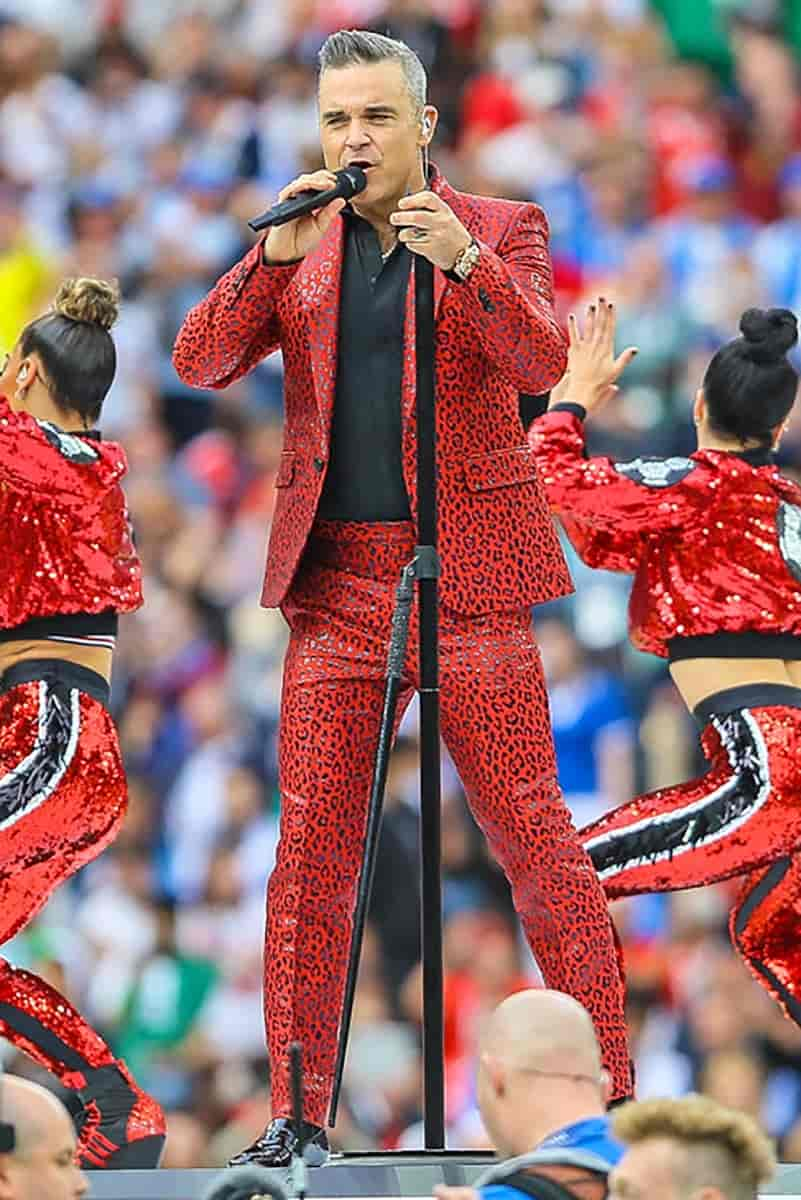
4. **Robbie Williams – “Rock DJ” (2000)**Robbie Williams, a pop star renowned for his infectious charisma and a cheeky, often boundary-pushing stage presence, undeniably elevated shock value to an entirely new, visceral level with his 2000 music video for “Rock DJ.” This particular visual is truly unforgettable, not just for its incredibly catchy tune that dominated airwaves, but for its utterly jaw-dropping and deeply unsettling climax that left audiences genuinely stunned and became a topic of intense conversation for ages. The video cleverly starts off with a relatively lighthearted and playfully cheeky tone, establishing a typical pop star narrative, but things quickly take a drastic, literal, and deeply gruesome turn as the visual progresses, leading to its infamous reputation.
As the energetic song builds to its crescendo, Williams embarks on a bizarre and unsettling transformation, stripping down not just his clothes, but, quite literally, peeling off his own skin. Yes, viewers are confronted with the shocking sight of him shedding layers of flesh, meticulously revealing his underlying muscles and bone structure. This graphic, visceral, and truly unique transformation was intended to be both a literal and profound metaphorical shedding of layers, designed to spark compelling discussions about the intense pressures of body image, the relentless demands of fame, and the often-unseen sacrifices made in the relentless pursuit of entertainment within the industry.
Williams’ fearless and audacious performance, pushing both physical and conceptual boundaries, profoundly captivated viewers, challenging the established norms of what was deemed permissible and acceptable in mainstream music videos at the turn of the millennium. Predictably, the video’s graphic and intensely disturbing content quickly led to its widespread ban on numerous music channels across various countries, sparking outrage and calls for censorship. However, rather than diminishing its impact, this controversy only further cemented its unique place as a memorable, undeniably audacious piece of pop culture history. “Rock DJ” remains renowned for its sheer audacity and its remarkable ability to make an indelible mark on the collective consciousness.
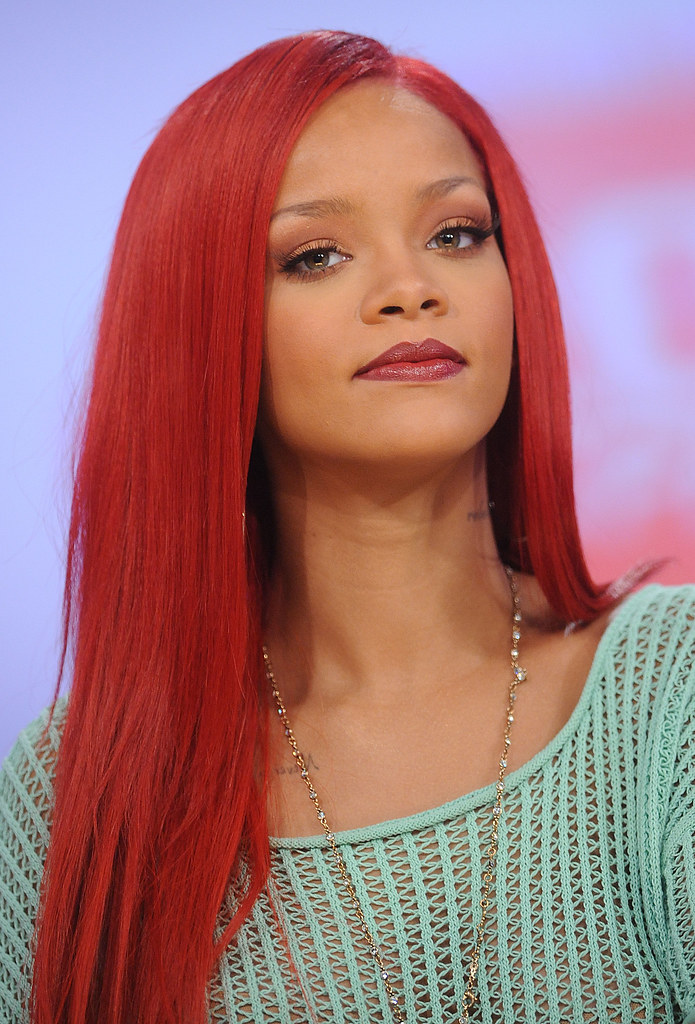
5. **Rihanna – “S&M” (2011)**Rihanna, a global music icon who consistently commands attention and deftly navigates cultural currents, delivered another potent and visually striking statement with her 2011 music video for “S&M.” This highly stylized visual is a bold and undeniably vibrant exploration of uality and uninhibited self-expression, meticulously crafted to challenge conventional perceptions and ignite spirited conversations across the globe. Featuring unmistakably suggestive imagery and playful yet explicit BDSM themes, the video almost immediately found itself embroiled in a whirlwind of controversy, leading to widespread bans and significant restrictions in numerous countries.
Its overtly provocative content directly challenged deeply ingrained societal norms concerning uality and public display, sparking passionate and often intense debates about the delicate and ever-shifting balance between artistic freedom and the perceived need for social responsibility and cultural sensitivity. Despite the widespread controversy and the regulatory hurdles it relentlessly faced, the video was simultaneously widely celebrated for its striking colorful aesthetic, its high-fashion avant-garde visuals, and what many ardent supporters perceived as an empowering message of sexual liberation and female agency. Rihanna’s unapologetic and confident embrace of her own sexuality resonated powerfully with a vast segment of her global fanbase, making “S&M” not only a resounding commercial triumph but also a significant and much-discussed cultural talking point.
The video’s controversial nature was further underscored by actions taken by major platforms. YouTube itself limited the video’s accessibility, strategically placing it behind an age-gate due to its explicitly graphically ual themes. This decision further fueled the ongoing public discussion about content appropriateness and the responsibility of platforms in curating media for diverse audiences. Additionally, the video was reportedly banned in 11 countries, a clear indication of its widespread impact and the varied cultural responses it elicited. Nevertheless, its playful yet defiantly confident tone and its bold artistic choices continue to inspire ongoing discussions on the vital concept of freedom of expression and the evolving portrayal of sexuality in mainstream media.

6. **Kanye West – “Famous” (2016)**Kanye West, an artist perpetually positioned at the very epicenter of cultural conversations and a master of artistic disruption, created yet another seismic ripple across the entertainment landscape with his 2016 music video for “Famous.” This particular visual grabbed immediate and intense attention with its utterly provocative and highly publicized portrayal of various famous personalities, including disturbingly realistic wax figures of pop superstar Taylor Swift and then-presidential candidate Donald Trump, all lying in a massive, shared bed. The unsettling and meticulously crafted imagery created a surreal, voyeuristic scene that immediately sparked widespread outrage and an intense, heated debate across the internet and traditional media.
The video, intentionally provocative, deliberately challenged the conventional boundaries of privacy, celebrity culture, and the ethics of public persona, immediately prompting widespread discussions about the limits of artistic freedom and the precise ethical lines artists might choose to cross. Kanye’s bold, uncompromising, and deeply self-referential vision was simultaneously criticized by many for its perceived exploitation of other celebrities and praised by others for its daring and incisive commentary on the pervasive and often invasive nature of fame itself. Taylor Swift, one of the most prominent figures depicted, publicly and vehemently condemned the video as exploitative, arguing it was an egregious violation of her privacy and image.
Critics further argued that the video objectified women and blurred the increasingly ambiguous lines between genuine artistic expression and mere sensationalist exploitation. This significant and very public backlash clearly highlighted the intricate complexities of celebrity relationships, the powerful influence of public perception, and the ethical considerations inherent in artistic representation. Despite its highly controversial content, which undeniably led several major platforms to refuse to air it, “Famous” remarkably received critical acclaim from certain art circles and was even nominated for multiple prestigious awards. This paradoxical outcome vividly demonstrated Kanye West’s undeniable knack for stirring potent and long-lasting conversations through his art, further solidifying his reputation as a master provocateur and an uncompromising visionary in the ever-evolving entertainment landscape.
Alright, so we’ve already dove headfirst into some of the most talked-about music video controversies of all time, uncovering the shocking visuals that dared to challenge and ultimately got pulled from the airwaves. But trust us, the creative clashes don’t stop there! The tension between artistic freedom and societal standards continues to spark truly wild debates, and the next six videos on our list are absolute proof of that.
These artists pushed the envelope, stirred up a massive frenzy, and redefined what we thought was “too much” for the screen. Get ready to explore more visually bold, boundary-pushing, and undeniably unforgettable music videos that faced the censor’s gavel but still left an undeniable mark on pop culture. It’s time to keep unwrapping the stories behind the bans!

7. **Madonna – “Justify My Love” (1990)**Madonna, the undisputed Queen of Pop, certainly knows a thing or two about sparking a conversation, and her 1990 music video for “Justify My Love” is another gleaming example of her masterful approach. This visual absolutely ignited a firestorm of controversy upon its initial release, primarily because it dared to feature undeniably explicit ual imagery that was deemed far too provocative for mainstream audiences. As a result, MTV, a major player in music broadcasting, made the decisive choice to ban the video entirely from its airwaves, immediately sparking heated public debates on the thorny issues of censorship and the fundamental limits of artistic freedom.
But Madonna, being Madonna, was not one to back down or be easily deterred. The video itself was brimming with explicit themes of BDSM, embracing androgyny, and exploring raw uality through passionate and intimate sensual scenes, all artfully captured in a stunning black-and-white aesthetic. Critics were certainly vocal, arguing that the video pushed the boundaries of acceptable content well past any reasonable limit, yet her dedicated fans passionately lauded its bold exploration of sexuality as a groundbreaking and necessary artistic statement.
In a truly bold and unprecedented move for the time, Madonna famously decided to release “Justify My Love” as a VHS single, effectively bypassing the mainstream censorship and taking her art directly to her audience. This ingenious strategy not only turned the controversy into a commercial success but also brilliantly showcased the paradox where censorship, instead of suppressing art, can sometimes amplify its reach and impact. While MTV might have refused to broadcast it, the video found success on other cable networks and has, over the years, come to be regarded as one of Madonna’s most iconic and defiant music videos.
Madonna herself staunchly defended her creation, famously calling it a “celebration of ” – a statement that perfectly encapsulated her fearless approach to challenging societal norms. This bold act of defiance further cemented her status as a trailblazer in the music industry, proving that she wasn’t just making music, but shaping cultural conversations. Her ability to turn backlash into heightened popularity vividly illustrates the complex and often fascinating relationship between controversy and artistic expression.

8. **Nine Inch Nails – “Happiness in Slavery” (1992)**Prepare yourself for an unforgettable journey into the intensely dark and uncompromising world of Nine Inch Nails once more, this time with their 1992 music video for “Happiness in Slavery.” This visual masterpiece is absolutely infamous for its profoundly disturbing and visceral content, making it a standout even among the most controversial videos of its era. It fearlessly delves into the bleakest corners of human experience, featuring graphic scenes of torture that left audiences worldwide reeling and profoundly unsettled.
The video’s raw and unflinching depiction of extreme violence, coupled with its unsettling exploration of masochistic themes, shattered traditional perceptions of what constituted “acceptable content” within mainstream music videos. It wasn’t just a challenge to the status quo; it was a sledgehammer, forcing viewers to confront uncomfortable realities and question the limits of their own tolerance for challenging art. Unsurprisingly, given its profoundly shocking nature, the video was swiftly and decisively banned across the globe, cutting off its access to a wide audience.
Despite its intensely controversial nature and the widespread bans it incurred, “Happiness in Slavery” has garnered significant praise for its unyielding artistic and fiercely provocative approach. It stands as a stark and powerful reminder of the profound capability of visual media to not only challenge but also deeply unsettle viewers, sparking conversations that linger long after the initial shock fades. The deliberate intent behind its creation was to push boundaries, and it absolutely succeeded.
The video’s very banned status, in a fascinating twist of fate, only served to fuel its legend and mystique among fans and critics alike. It cemented its place as a cult classic, celebrated precisely for its audacious vision and its refusal to compromise on its dark, challenging themes. “Happiness in Slavery” remains a pivotal piece in Nine Inch Nails’ provocative discography, a testament to their unwavering commitment to confronting the unsettling aspects of the human condition through their art.

9. **Erykah Badu – “Window Seat” (2010)**Erykah Badu, an artist celebrated for her fearless individuality and profound artistic expression, certainly commanded widespread attention with her 2010 music video for “Window Seat.” This visual is a masterclass in bold, unapologetic artistic statement-making, designed to spark thought and challenge convention. The video gained particular notoriety for its raw, unfiltered approach, being filmed in a single, continuous take as Badu walks confidently through the bustling streets of Dallas, gradually undressing herself until she is completely in public.
This powerful public display of vulnerability, both a literal and metaphorical shedding of layers, immediately led to the video being swiftly pulled in various locations, primarily due to existing indecent exposure laws. However, Badu’s intent was far deeper than mere provocation; she eloquently explained that her primary aim was to make a profound statement about self-liberation, shedding the often-overwhelming societal pressures to conform to arbitrary norms and expectations. It was a courageous act designed to highlight the beauty and power of authentic self-expression.
The video’s raw and candid nature resonated powerfully with audiences and critics, sparking widespread discussions about the complex interplay between censorship, artistic freedom, and the inherent power that vulnerability holds within the realm of art. Badu’s bold choice forced viewers to consider what truly constitutes “decency” in public spaces and how artists can use their platforms to ignite crucial cultural dialogues. It was an unfiltered look at self-acceptance in a world constantly demanding perfection.
“Window Seat” has since cemented its significant place in music video history, not just for its controversial public nudity, but for its profound message and the vital conversations it instigated. It remains a shining example of how an artist can utilize their creative vision to push societal boundaries, advocating for personal freedom and challenging the ingrained norms that often seek to restrict genuine human expression. It’s truly a bold and inspiring piece of art that continues to resonate.

10. **Aphex Twin – “Come to Daddy” (1997)**Brace yourselves for a truly unforgettable and utterly chilling ride, because Aphex Twin’s 1997 music video for “Come to Daddy” isn’t just a visual accompaniment to a song; it’s a full-blown descent into a haunting and intensely surreal experience. This video is famously known for its nightmarish imagery and an unsettling tone that sticks with you long after the credits roll, instantly earning it a reputation for being far too disturbing for mainstream television audiences. It absolutely shattered conventional perceptions of what horror could look like in a music video.
Directed by the visionary Chris Cunningham, the video is a chaotic and deeply unsettling fever dream. Viewers are confronted with profoundly disturbing scenes featuring monstrous children, many of them eerily sporting the unmistakable face of Aphex Twin mastermind Richard D. James himself, alongside a demonic TV scream that pierces the urban soundscape. All of this unfolds amidst a sprawling, desolate gray urban landscape, creating an atmosphere of pure, unadulterated dread and unsettling chaos. It’s definitely not for the faint of heart!
Cunningham’s innovative and groundbreaking directorial style, combined with the video’s intensely eerie atmosphere, undeniably captivated audiences, even those who found its content deeply controversial and profoundly disturbing. It wasn’t just a sequence of jarring images; it was a meticulously crafted piece of art designed to burrow into your subconscious and stay there. The way it merged surrealism with stark reality was, and still is, groundbreaking.
“Come to Daddy” remains a landmark achievement in experimental music video production, showcasing the incredible power of visual media to evoke intensely strong emotional reactions and push the boundaries of artistic expression. Its profound impact continues to endure, influencing countless artists and filmmakers across various genres, solidifying its place as one of the most unsettling—and undeniably brilliant—videos ever made. This one proves that sometimes, art is meant to be provocative, not pretty.

11. **Pearl Jam – “Jeremy” (1992)**Pearl Jam’s 1992 music video for “Jeremy” is far more than just a visual backdrop; it’s a profoundly poignant and emotionally charged exploration into the dark corners of teenage isolation and heartbreaking tragedy. This powerful video, chillingly based on a true story, unflinchingly depicts a troubled youth’s agonizing descent into despair, a narrative that culminates in a gut-wrenching school shooting. Its stark and uncompromising portrayal of violence, and the devastating impact it has on young, vulnerable lives, was so intense that the original uncensored cut was quickly and decisively pulled from airwaves.
The sheer rawness of the video, particularly its ending with implied school violence, was deemed “too much for MTV after Columbine,” according to reports, showcasing the immense sensitivity around such themes, even years before the tragic event. The immediate withdrawal of the original cut highlighted the intense societal anxieties surrounding youth violence and the media’s role in its portrayal. It was a difficult video to watch, but arguably a necessary one.
Despite the controversy and its forced removal from mainstream circulation, the video for “Jeremy” garnered widespread critical acclaim for its remarkably powerful storytelling and its profound emotional depth. It didn’t just entertain; it sparked genuinely important and difficult conversations about youth violence and the often-overlooked crisis of mental health among young people, bringing these critical social issues to the forefront of public consciousness. The discussions it ignited were just as impactful as the visuals themselves.
The video, even in its censored forms, powerfully underscored the vital role that art can play in fearlessly addressing pressing social issues, forcing viewers to confront uncomfortable truths. Although the original cut was swiftly pulled, the sheer power and resonance of the song only continued to grow, cementing its enduring legacy as a potent and unforgettable piece of music video history that continues to resonate with new generations. It’s a somber reminder of the weight art can carry.

12. **Marilyn Manson – “(s)AINT” (2003)**Alright, buckle up for a wild ride with Marilyn Manson, because his 2003 music video for “(s)AINT” took his already characteristic gothic and provocative style to absolutely extreme, controversial new heights. This visual is not for the faint of heart, diving headfirst into explicit themes of self-destruction, interwoven with unsettling religious iconography, all wrapped up in a dark, unfiltered portrayal of excess and indulgence that was genuinely shocking to countless viewers. It was Manson at his most uncompromising, pushing every single button imaginable.
Manson’s unsettling imagery and incredibly provocative storytelling did exactly what he intended: they directly challenged deeply ingrained religious sensibilities and societal norms, inevitably creating a full-blown storm of censorship and passionate public debate. In fact, the video was deemed “too graphic even for his own label,” a testament to just how far it pushed the envelope. This explicit content was not an accident; it was a deliberate reflection of Manson’s artistic intent to disrupt, provoke thought, and force audiences to confront uncomfortable truths about themselves and society.
The video explicitly featured graphic depictions of self-mutilation, unmistakable drug use, and an almost raw, unfiltered rage that left little to the imagination. This intense combination made it an immediate target for broadcasters and moral watchdogs alike. The debates raged on about where artistic freedom truly ends and where perceived irresponsibility begins, solidifying Manson’s reputation as a master provocateur who never shied away from the most challenging aspects of human existence.
Although “(s)AINT” was famously banned from many networks, effectively locking it away from mainstream viewing, it still stands as a powerful and undeniable testament to Manson’s unparalleled ability to boldly push artistic boundaries and confront controversial themes head-on. It’s a stark, visceral reminder that some artists are driven not by mass appeal, but by an unwavering commitment to their unique, often disturbing, artistic vision.
And there you have it, folks! We’ve journeyed through twelve of the most talked-about, boundary-breaking, and flat-out banned music videos in history. From religious iconography to graphic violence, explicit uality to celebrity commentary, these visuals dared to defy the norms and, in doing so, ignited crucial conversations that still echo today. Whether they were pulled for being “too much skin, too much truth, or too much weirdness,” their very notoriety often amplified their cultural impact, proving that sometimes, being censored only makes a piece of art more unforgettable. They grabbed our attention, stirred our emotions, and undoubtedly left an indelible mark on the ever-evolving world of music and pop culture. Now *that’s* a playlist of provocateurs!


